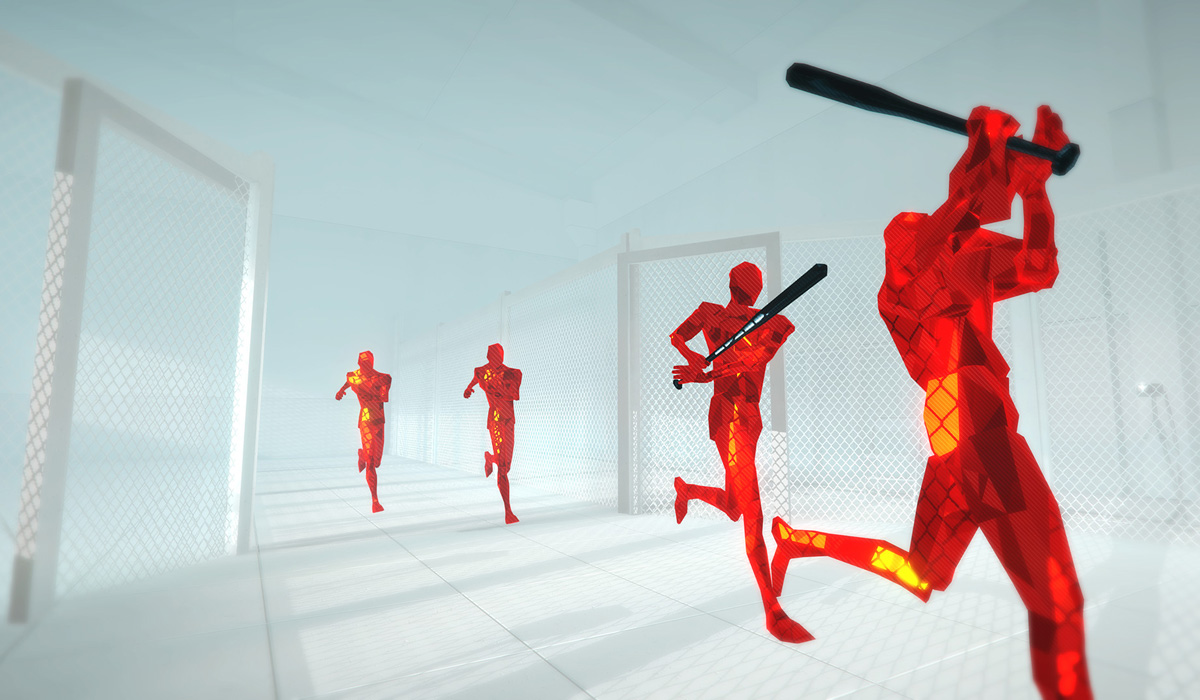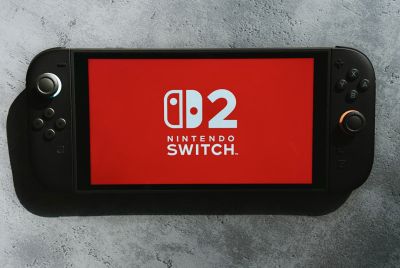Superhot review: An exceptional puzzle-shooter almost ruined by its obnoxious narrative
A lot of games allow players to pull off incredible feats by sacrificing how much input they have. Quick time events, for example, allowed Leon Kennedy to take part in an intricate knife fight in Resident Evil 4, but all the players did themselves was press a button when that button appeared on screen. Superhot manages to make those playing it feel skilled, agile and capable of taking out entire rooms of enemies, while still giving them a great level of input in the game and its outcomes.
In Superhot, time advances only when you move (give or take, it moves at a barely-noticeable pace when you're still). Players can look around, to plan their movements and scout for new threats, while the world is still frozen – but only when they move, shoot a weapon or throw an object, will enemies advance and bullets follow their trajectory.
Each stage comes with a set amount of foes to be taken out, who appear from all angles and at different times. The core mechanic of Superhot makes it more of a puzzle game than a shooter, with a multitude of threats to assess and juggle. It's tougher than it sounds, but offers a great sense of reward when each stage is completed and the real-time replay of your actions unfolds.
For example, in one level you might jump down from a ledge, slice two foes with a katana, throw the sword at a third enemy than grab their gun in mid-air, turn and deliver a headshot to a fourth. A replay will show the complete action in a matter of seconds, but during play it might take four or five times as long to set each action up.



It's a fantastic mechanic worthy of a more accomplished game overall. Each of the aforementioned replays is accompanied by the words Super and Hot flashing over the screen as a voice over says them. At first it seems to be a fun quirk, but it doesn't take long for it to get old. The inability to easily share replays online compounds how insufferable the constant "SUPER. HOT" dirge can be, and it represents the game's problem overall.
The core single player mode unfolds across 30+ stages, telling a vague story about getting lost in, and consumed by, the Superhot game discovered by a couple of friends. It intends to tie the bursts of puzzling gameplay together, but in practice the "story" elements – text chats executed by holding the triggers to type and vacuous portions of empty gameplay – only get in the way of the delights of what makes Superhot work.
Wholly obnoxious and infuriating, this whole narrative structure nearly sullies the entire experience, but it doesn't take a huge amount of time to work through. Completion reaps the reward of the two new modes that save Superhot. Challenge mode tasks players with running through story missions under certain parameters, such as only using a sword or only throwing objects, and then there's an Endless mode sure to keep players coming back.
The choking, pseudo-intellectual narrative elements and laborious attempts to make the game go viral on social media are transparent stabs at making Superhot seem cool when it already was to begin with. How it plays, coupled with its distinctive red and white art style, already make Superhot one of the most unique and interesting games of the year so far, all further attempts to engineer a stylish or contemporary quality for the game just water that down.
Once free of the arduous and obnoxious trappings of its main mode of play, Superhot is nothing short of a delight. At its core is a gameplay mechanic that deserves to be revisited, only next time we hope it's all held together significantly better.
For all the latest video game news follow us on Twitter @IBTGamesUK.
© Copyright IBTimes 2025. All rights reserved.


















